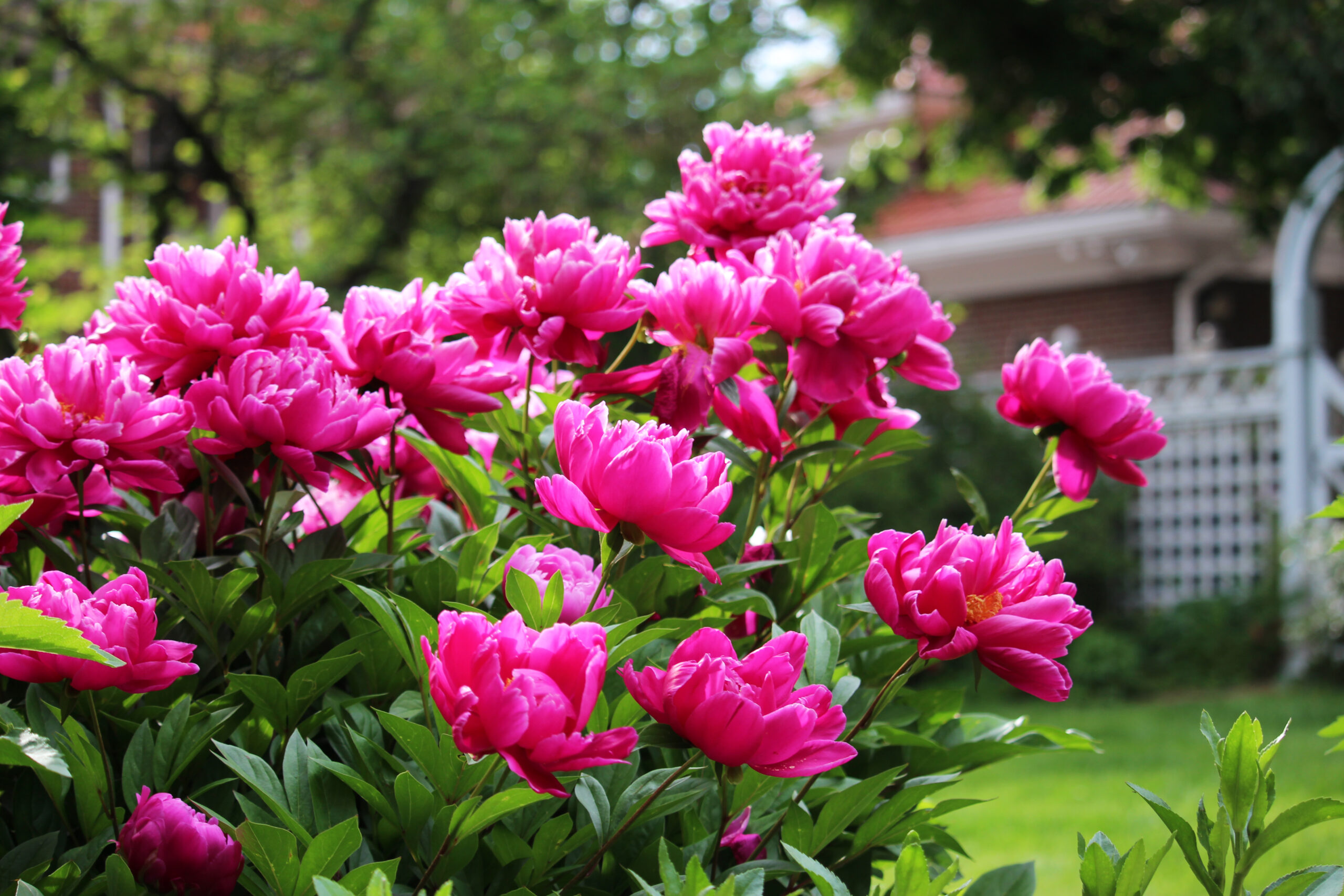
Native to Asia, Europe and northwestern United States, peonies have been admired and cultivated for more than 1,500 years.
How are peonies classified?
Although there are numerous species and thousands of varieties, the plants are generally classified by growth habit – herbaceous, tree, intersectional. The foliage of herbaceous peonies dies to the ground each fall. Tree peonies are shrub-like with woody stems, and intersectional or Itoh peonies are a hybrid between herbaceous and tree peonies.
What peonies are most common?
Herbaceous peonies that are common to many home gardens typically growing three- to four-feet tall with a round shape and lustrous, dark green foliage. Their flowers are large and fragrant, often blooming in late May or early June along the Front Range. In autumn, the foliage can take on a yellow or reddish-maroon color.
What colors do peonies come in?
The six-inch diameter blooms come in many colors including white, pink, red, maroon, and bicolor. Tree peonies and Itoh peonies expand the color palette to include yellows and corals. In addition to growth habit and flower color, herbaceous peonies are classified into types based on the petals in their flowers and the extent to which the stamens are petal-like: single flower, Japanese, anemone, semi-double, and double.
Where do peonies do the best?
Herbaceous peonies do best in full sun but will tolerate light shade. Tree peonies prefer light shade and a protected location. All types of peonies prefer rich, loamy, well-drained soil but will tolerate and bloom in a wide range of soil types. Plant peonies about four feet apart to accommodate their mature size. Herbaceous and Itoh peonies should be staked early in the growing season since the flowers are very heavy and tend hold water and flop over. Fertilize in the spring and mulch in the winter for best growth.
How long do peonies last?
Peonies live for many years in the landscape and for optimal flowering should be placed in a permanent location. If an herbaceous peony fails to bloom after three years in the same location, it is most likely due to being planted too deeply. When planting, the eyes should be placed no more than one inch below the soil surface. Herbaceous peonies can also fail to bloom if they are planted in too much shade. Young plants or recently divided or transplanted plants take time to establish before blooming. Plants that have received excess nitrogen fertilizer will put on foliar growth instead of flowers.
Do peonies attract bugs?
Ants are attracted to the nectar on the flower buds. They are not necessary for the flowers to open nor are they an indication of a problem.
For “Ants & Landscape Plants” refer to message number 1420.
For “Powdery Mildew” refer to message number 1415.
For “Spider Mites” refer to message number 1416.
For more information, see the following Colorado State University Extension fact sheet(s).



